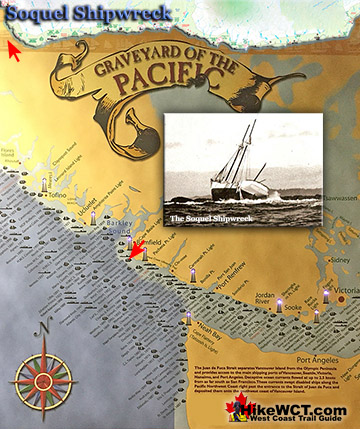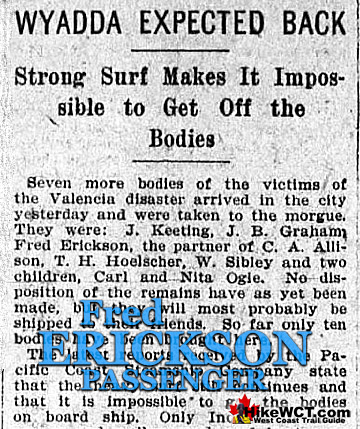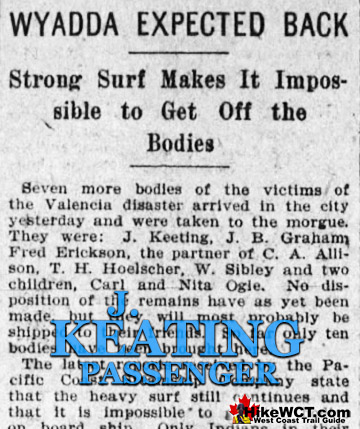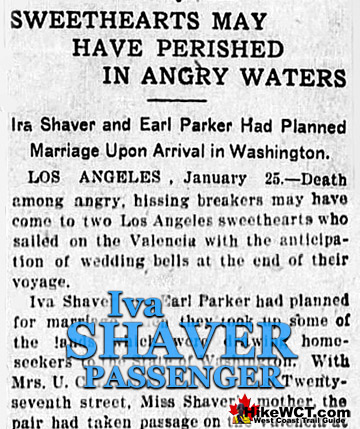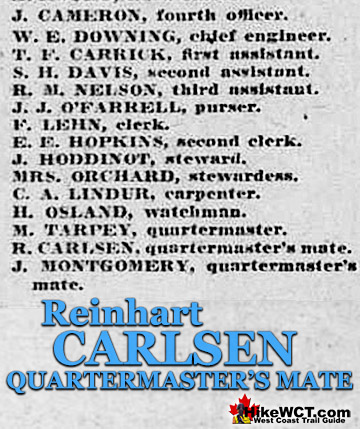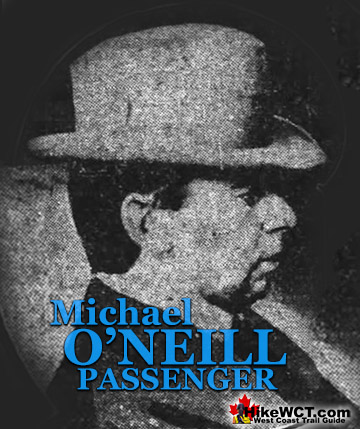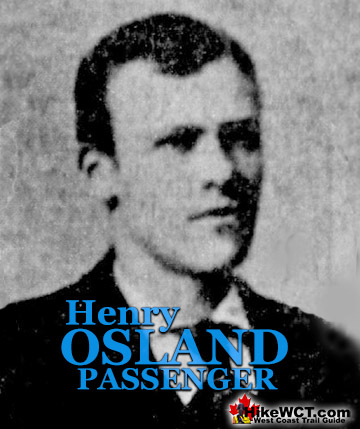Valencia Shipwreck Survivors
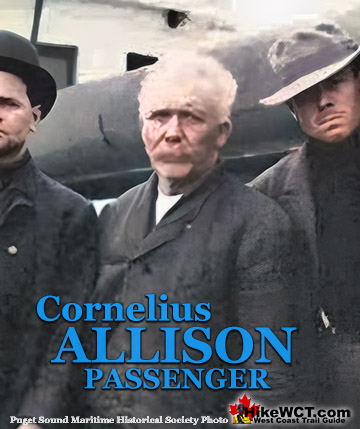
![]() Cornelius Allison was a first-class passenger and one of the 38 survivors of the SS Valencia shipwreck. In his sixties at the time, Allison was a former sailor with significant maritime experience, which shaped his perspective and actions during the ordeal. A contractor from St. Paul, he was on vacation with his friend Fred Erickson, who did not survive.
Cornelius Allison was a first-class passenger and one of the 38 survivors of the SS Valencia shipwreck. In his sixties at the time, Allison was a former sailor with significant maritime experience, which shaped his perspective and actions during the ordeal. A contractor from St. Paul, he was on vacation with his friend Fred Erickson, who did not survive.
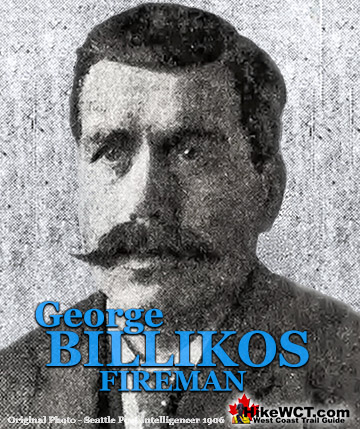
![]() George Billikos was a fireman on the Valencia that survived as part of the Bunker Party. His name was hilariously misspelled in newspaper reports as B.E. Ledhos and several other imaginative spellings. He left the Valencia in the first hour after the wreck on the No.3 lifeboat, the fifth boat launched and managed to get away from the Valencia for a short distance with fifteen people on board.
George Billikos was a fireman on the Valencia that survived as part of the Bunker Party. His name was hilariously misspelled in newspaper reports as B.E. Ledhos and several other imaginative spellings. He left the Valencia in the first hour after the wreck on the No.3 lifeboat, the fifth boat launched and managed to get away from the Valencia for a short distance with fifteen people on board.
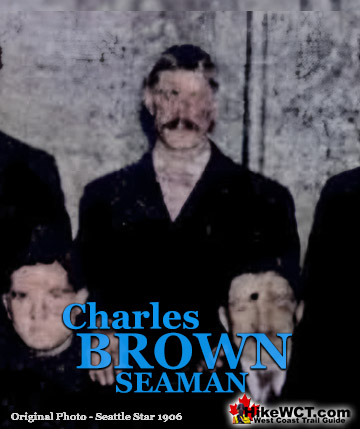
![]() Charles Brown, a seaman on the Valencia was one of the six crewmen that left the Valencia in the last lifeboat, the McCarthy Boat, the morning after the shipwreck. The McCarthy Boat left the Valencia at about 9am on Tuesday, January 23rd.
Charles Brown, a seaman on the Valencia was one of the six crewmen that left the Valencia in the last lifeboat, the McCarthy Boat, the morning after the shipwreck. The McCarthy Boat left the Valencia at about 9am on Tuesday, January 23rd.
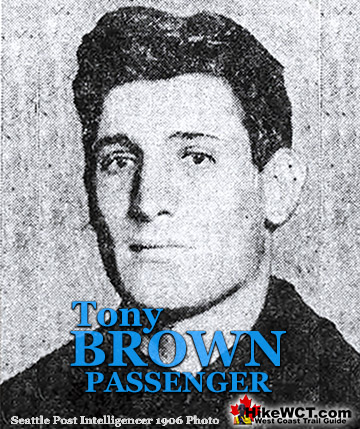
![]() Tony Brown was a first class passenger on the Valencia who survived with the Bunker Party. He was on board the No.3 lifeboat with Frank Campbell, George Billikos, Yosuki Hosoda, Mike Stone, Charles Samuels, and Albert Willis. The boat made it a short distance from the Valencia before getting caught in the surf and flipped.
Tony Brown was a first class passenger on the Valencia who survived with the Bunker Party. He was on board the No.3 lifeboat with Frank Campbell, George Billikos, Yosuki Hosoda, Mike Stone, Charles Samuels, and Albert Willis. The boat made it a short distance from the Valencia before getting caught in the surf and flipped.
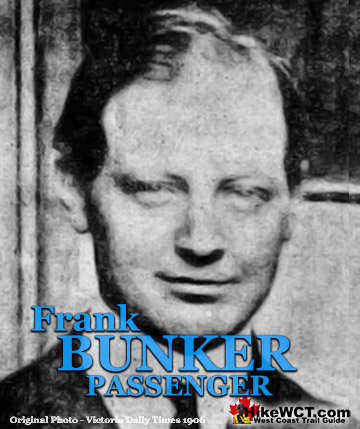
![]() Frank Bunker was a first-class passenger on the Valencia who survived in the shore party that he led and became known as the Bunker Party. During the horrific first hour of the Valencia shipwreck six of the seven lifeboats were haphazardly launched.
Frank Bunker was a first-class passenger on the Valencia who survived in the shore party that he led and became known as the Bunker Party. During the horrific first hour of the Valencia shipwreck six of the seven lifeboats were haphazardly launched.
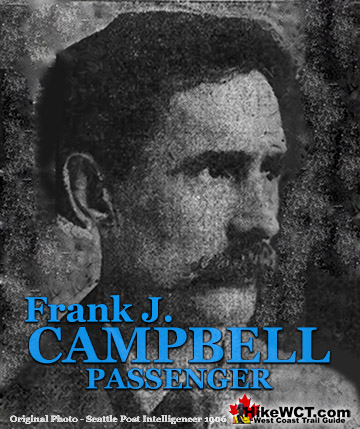
![]() Frank J. Campbell was a second class passenger on the Valencia who survived with the Bunker Party. Prior to the voyage, Campbell worked as an agent for the Metropolitan Life Insurance Company in Alameda, California. He was traveling to Seattle with his wife and 16-year-old stepdaughter to establish a machine business.
Frank J. Campbell was a second class passenger on the Valencia who survived with the Bunker Party. Prior to the voyage, Campbell worked as an agent for the Metropolitan Life Insurance Company in Alameda, California. He was traveling to Seattle with his wife and 16-year-old stepdaughter to establish a machine business.
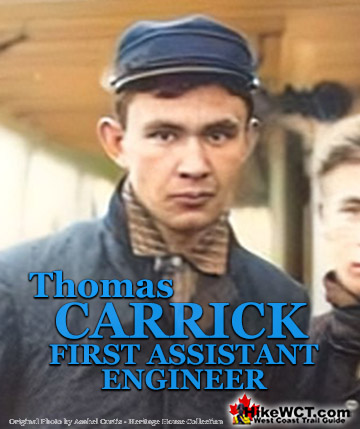
![]() Thomas Carrick, the first assistant engineer on the Valencia survived on the second raft picked up by the Topeka. In the chaotic first hour of the wreck, Carrick was in charge of the No.7 lifeboat. Timothy McCarthy, boatswain on the Valencia recalled, “No.7 was a wrecking boat and was small. She was in charge of Assistant Engineer Carrick. As she was lowered, one end became unfastened, and the people in her were spilled into the sea, all losing their lives except Carrick, who was pulled on board by his shipmates.”
Thomas Carrick, the first assistant engineer on the Valencia survived on the second raft picked up by the Topeka. In the chaotic first hour of the wreck, Carrick was in charge of the No.7 lifeboat. Timothy McCarthy, boatswain on the Valencia recalled, “No.7 was a wrecking boat and was small. She was in charge of Assistant Engineer Carrick. As she was lowered, one end became unfastened, and the people in her were spilled into the sea, all losing their lives except Carrick, who was pulled on board by his shipmates.”
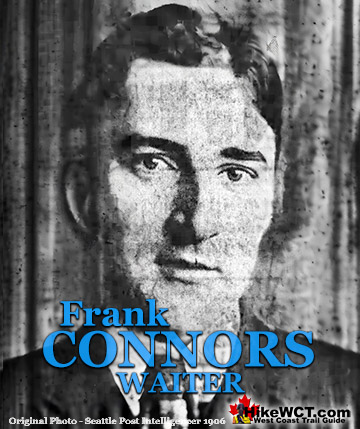
![]() Frank Connors was a waiter on the Valencia and only one of four men that miraculously survived on the Turret Raft. The first of two life rafts, which could hold 18 people, departed Wednesday morning, the 24th of January, with only 10 on board as everyone else was afraid to get on and many expected rescue to come quickly now that a ship had arrived.
Frank Connors was a waiter on the Valencia and only one of four men that miraculously survived on the Turret Raft. The first of two life rafts, which could hold 18 people, departed Wednesday morning, the 24th of January, with only 10 on board as everyone else was afraid to get on and many expected rescue to come quickly now that a ship had arrived.
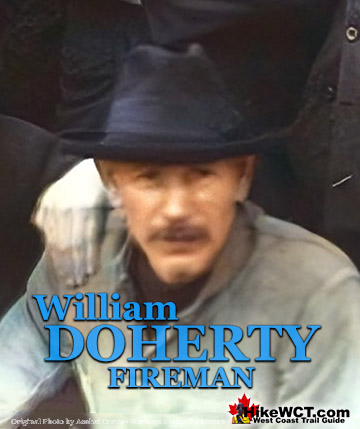
![]() William Doherty, a 40-year-old fireman with 22 years of experience on steamships, was one of the 19 survivors rescued by the steamship Topeka. His account sheds light on the chaos and survival efforts during the catastrophe. Doherty was in the engine room when the Valencia struck a reef, causing water to flood the fore part of the ship. He and his crewmates worked desperately to maintain steam pressure as the order came for “full speed astern,” prompting the ship to reverse rapidly.
William Doherty, a 40-year-old fireman with 22 years of experience on steamships, was one of the 19 survivors rescued by the steamship Topeka. His account sheds light on the chaos and survival efforts during the catastrophe. Doherty was in the engine room when the Valencia struck a reef, causing water to flood the fore part of the ship. He and his crewmates worked desperately to maintain steam pressure as the order came for “full speed astern,” prompting the ship to reverse rapidly.
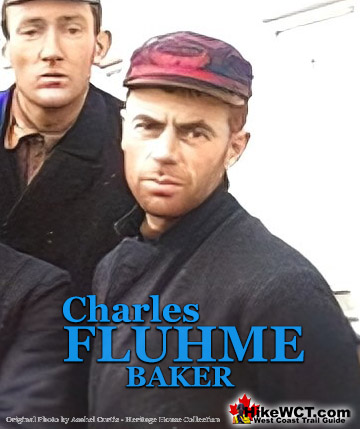
![]() Charles Fluhme was the baker on the Valencia and survived on the second liferaft picked up by the City of Topeka. He is mentioned very little in newspapers reporting on the Valencia. The San Francisco Chronicle wrote a brief article about him on January 26th, 1906:
Charles Fluhme was the baker on the Valencia and survived on the second liferaft picked up by the City of Topeka. He is mentioned very little in newspapers reporting on the Valencia. The San Francisco Chronicle wrote a brief article about him on January 26th, 1906:
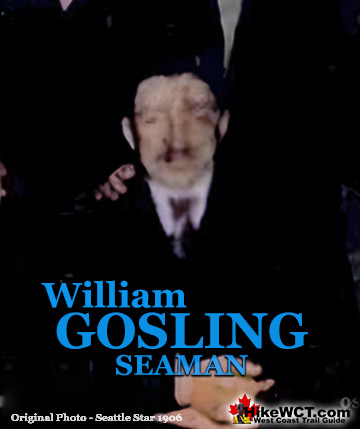
![]() William Gosling was a seaman on the Valencia who survived on the McCarthy Boat. The morning after the Valencia wrecked, the one remaining lifeboat was successfully launched with six volunteer crewmen under the command of boatswain Timothy McCarthy. The goal of the McCarthy Boat was to get to shore and make their way up to the cliff above the ship.
William Gosling was a seaman on the Valencia who survived on the McCarthy Boat. The morning after the Valencia wrecked, the one remaining lifeboat was successfully launched with six volunteer crewmen under the command of boatswain Timothy McCarthy. The goal of the McCarthy Boat was to get to shore and make their way up to the cliff above the ship.
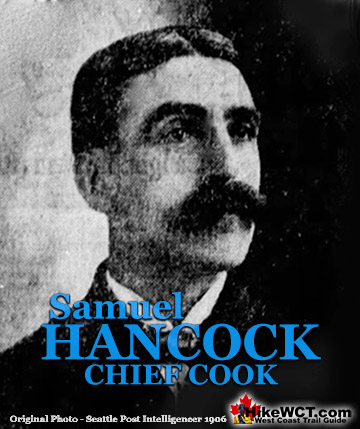
![]() Samuel Hancock was the chief cook on the Valencia and survived on the life raft that reached Turret Island. Later dubbed the Turret Raft, Hancock was just one of four survivors out of the ten men that set off from the first of two rafts that left the Valencia just two hours before it collapsed into the sea.
Samuel Hancock was the chief cook on the Valencia and survived on the life raft that reached Turret Island. Later dubbed the Turret Raft, Hancock was just one of four survivors out of the ten men that set off from the first of two rafts that left the Valencia just two hours before it collapsed into the sea.
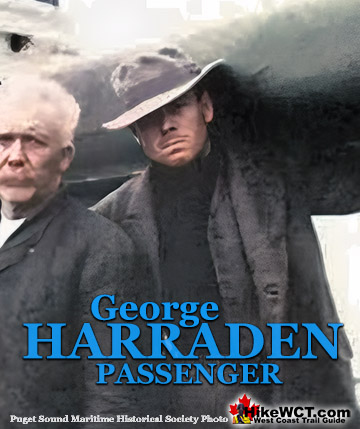
![]() George Harraden, a first class passenger on the Valencia that escaped on the raft picked up by the Topeka. His name is spelled different in almost every newspaper reporting on the Valencia. Variously spelled Haradan, Harradon and Harriden to name a few. In an interview in the days following the Valencia disaster Harraden recalled sending his mother off on what was likely lifeboat No.1.
George Harraden, a first class passenger on the Valencia that escaped on the raft picked up by the Topeka. His name is spelled different in almost every newspaper reporting on the Valencia. Variously spelled Haradan, Harradon and Harriden to name a few. In an interview in the days following the Valencia disaster Harraden recalled sending his mother off on what was likely lifeboat No.1.
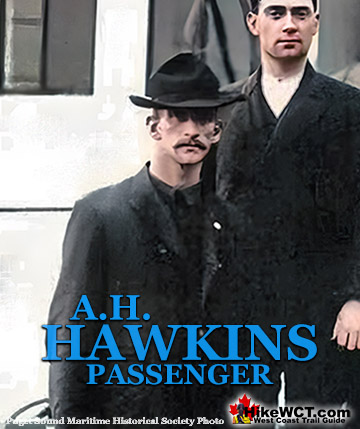
![]() A.H. Hawkins was a second-class passenger on the Valencia and one of the nineteen survivors picked up 36 hours into the disaster by the City of Topeka. Very little is known about A.H. Hawkins before or after the Valencia disaster in 1906. The Seattle Post Intelligencer reported that he had been a resident of Seattle for about seventeen years. He travels considerably. He lived util a few years ago on Twenty-third avenue near Madison street.
A.H. Hawkins was a second-class passenger on the Valencia and one of the nineteen survivors picked up 36 hours into the disaster by the City of Topeka. Very little is known about A.H. Hawkins before or after the Valencia disaster in 1906. The Seattle Post Intelligencer reported that he had been a resident of Seattle for about seventeen years. He travels considerably. He lived util a few years ago on Twenty-third avenue near Madison street.
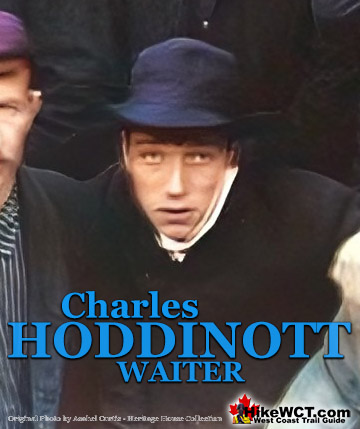
![]() Charles P. Hoddinott was a waiter on the Valencia who survived on the last life raft to leave the ship. Charles Hoddinott worked for the company for four years and was the brother of the ship's chief steward Jack Hoddinott, who drowned in the wreck. The chief steward refused a spot on the last life raft, insisting on staying behind to assist the women and children. Charles reportedly urged his brother to join him, but Jack declined, saying, "I am going to stand by the women and children."
Charles P. Hoddinott was a waiter on the Valencia who survived on the last life raft to leave the ship. Charles Hoddinott worked for the company for four years and was the brother of the ship's chief steward Jack Hoddinott, who drowned in the wreck. The chief steward refused a spot on the last life raft, insisting on staying behind to assist the women and children. Charles reportedly urged his brother to join him, but Jack declined, saying, "I am going to stand by the women and children."
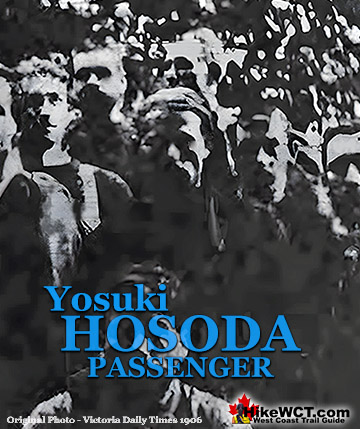
![]() Yosuki Hosoda was a Japanese second-class passenger on the Valencia who survived in the Bunker Party. He was one of the survivors that reached shore from lifeboat No.3 during the first horrific hour after the Valencia struck. He was travelling with two other Japanese men, T. Manwakio and S. Rancuna, who did not survive and were possibly on lifeboat No.3 with Hosoda.
Yosuki Hosoda was a Japanese second-class passenger on the Valencia who survived in the Bunker Party. He was one of the survivors that reached shore from lifeboat No.3 during the first horrific hour after the Valencia struck. He was travelling with two other Japanese men, T. Manwakio and S. Rancuna, who did not survive and were possibly on lifeboat No.3 with Hosoda.
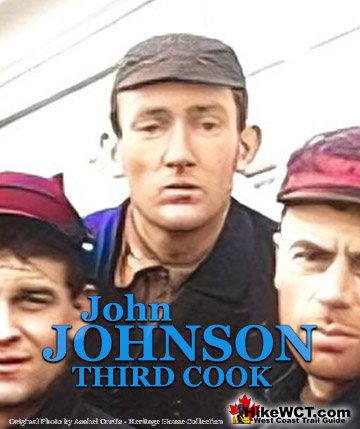
![]() John Johnson third cook on the Valencia who was one of the nineteen liferaft survivors that were saved by the City of Topeka. Nineteen year-old Johnson lived in San Francisco and had recently transferred to the Valencia from the Roanoake.
John Johnson third cook on the Valencia who was one of the nineteen liferaft survivors that were saved by the City of Topeka. Nineteen year-old Johnson lived in San Francisco and had recently transferred to the Valencia from the Roanoake.
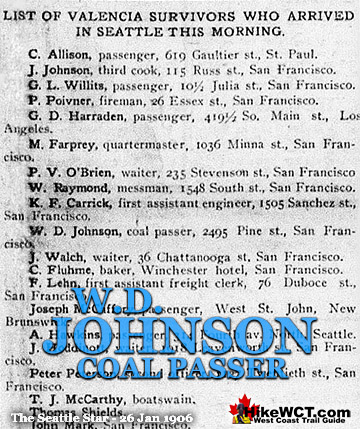
![]() W.D. Johnson was a coal passer on the Valencia who survived on the Topeka Raft. Little is known about him beyond newspaper reports of him being one of the survivors picked up by the City of Topeka. Newspaper reports also list him as one of the survivors that arrived in Seattle.
W.D. Johnson was a coal passer on the Valencia who survived on the Topeka Raft. Little is known about him beyond newspaper reports of him being one of the survivors picked up by the City of Topeka. Newspaper reports also list him as one of the survivors that arrived in Seattle.
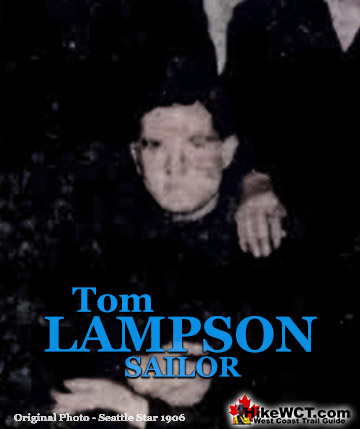
![]() Tom Lampson was a sailor on the Valencia who survived on the McCarthy Boat. His name is misspelled in almost every mention of him in newspapers after the disaster. He is H. Lemsen, T. Lamson and T. Lawson to name just a few. His photo appears in a couple newspapers. The Seattle Star on January 27th, 1906 has him in a group photo with Timothy McCarthy, Charles Brown, Thomas Shields and William Gosling. The San Francisco Examiner on January 29th, 1906 has a photo of him and Timothy McCarthy and John Marks.
Tom Lampson was a sailor on the Valencia who survived on the McCarthy Boat. His name is misspelled in almost every mention of him in newspapers after the disaster. He is H. Lemsen, T. Lamson and T. Lawson to name just a few. His photo appears in a couple newspapers. The Seattle Star on January 27th, 1906 has him in a group photo with Timothy McCarthy, Charles Brown, Thomas Shields and William Gosling. The San Francisco Examiner on January 29th, 1906 has a photo of him and Timothy McCarthy and John Marks.
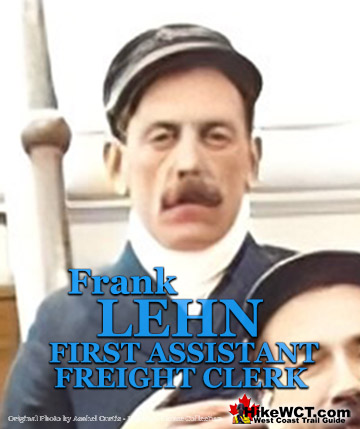
![]() Frank Lehn was the first assistant freight clerk on the Valencia who survived on the Topeka Raft. Daily Colonist Feb 13 p6: Frank Lehn. Frank Lehn The second raft was prepared and he had jumped for it when he felt the steamer’s deckhouse being washed away.
Frank Lehn was the first assistant freight clerk on the Valencia who survived on the Topeka Raft. Daily Colonist Feb 13 p6: Frank Lehn. Frank Lehn The second raft was prepared and he had jumped for it when he felt the steamer’s deckhouse being washed away.
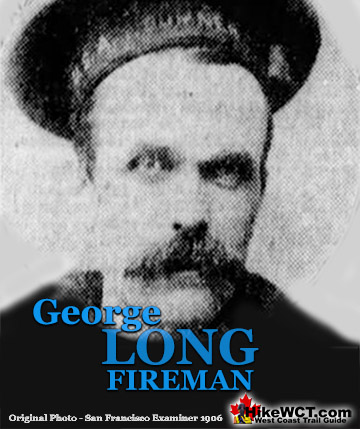
![]() George Long was a fireman on the Valencia who survived on the Turret Raft. Long was an Irishman and had been working on ships all around the world for 16 years. He home was in San Francisco and reportedly took the place of P. Delhanty as a fireman on the Valencia just a few hours before sailing.
George Long was a fireman on the Valencia who survived on the Turret Raft. Long was an Irishman and had been working on ships all around the world for 16 years. He home was in San Francisco and reportedly took the place of P. Delhanty as a fireman on the Valencia just a few hours before sailing.
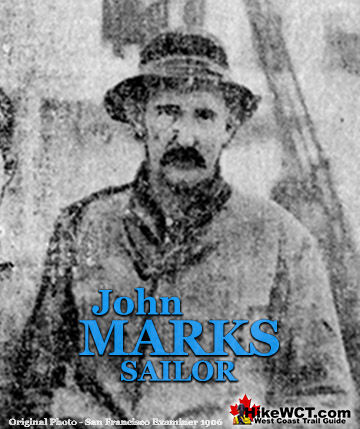
![]() John Marks was a sailor on the Valencia survived on the McCarthy Boat. His name is misspelled in a variety of ways in newspaper reports, as Jack Marks and in the same paper as John Monk and John Mark. Marks had been taking soundings up to fifteen minutes before the vessel struck. He last reported twenty-six fathoms of water.
John Marks was a sailor on the Valencia survived on the McCarthy Boat. His name is misspelled in a variety of ways in newspaper reports, as Jack Marks and in the same paper as John Monk and John Mark. Marks had been taking soundings up to fifteen minutes before the vessel struck. He last reported twenty-six fathoms of water.
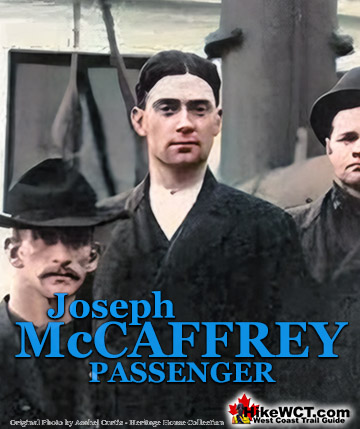
![]() Joseph McCaffrey was a second-class passenger on the Valencia and one of the Topeka Raft survivors. McCaffrey, age 23 was from St. John New Brunswick and departed his home town in November to seek his fortune in the West.
Joseph McCaffrey was a second-class passenger on the Valencia and one of the Topeka Raft survivors. McCaffrey, age 23 was from St. John New Brunswick and departed his home town in November to seek his fortune in the West.
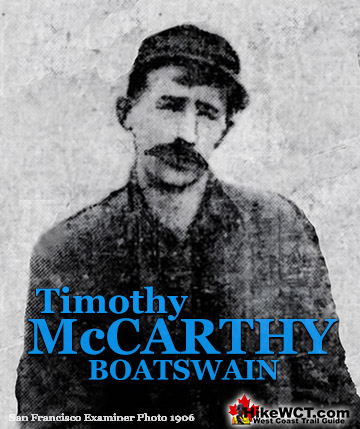
![]() Timothy McCarthy was the boatswain on the Valencia and survived on the last lifeboat, the No.5 boat launched the morning after the wreck, that became known as the McCarthy Boat. McCarthy hailed from Gloucester, Massachusetts, a prominent fishing port, where he grew up fishing in local waters. He had more than 15 years of seafaring experience by the time of the Valencia voyage, having worked on various steamboats and steamers.
Timothy McCarthy was the boatswain on the Valencia and survived on the last lifeboat, the No.5 boat launched the morning after the wreck, that became known as the McCarthy Boat. McCarthy hailed from Gloucester, Massachusetts, a prominent fishing port, where he grew up fishing in local waters. He had more than 15 years of seafaring experience by the time of the Valencia voyage, having worked on various steamboats and steamers.
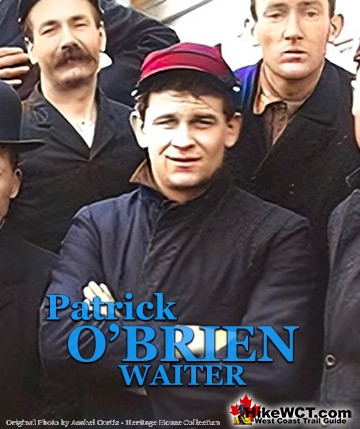
![]() Patrick O'Brien a waiter on the Valencia and one the life raft survivors picked up by the City of Topeka. Very little is known about him and he is rarely mentioned in newspapers and seems to have never been interviewed. His photo appears in a few newspapers, but nothing about him. We can only piece together his time on the Valencia from the experiences of other survivors.
Patrick O'Brien a waiter on the Valencia and one the life raft survivors picked up by the City of Topeka. Very little is known about him and he is rarely mentioned in newspapers and seems to have never been interviewed. His photo appears in a few newspapers, but nothing about him. We can only piece together his time on the Valencia from the experiences of other survivors.
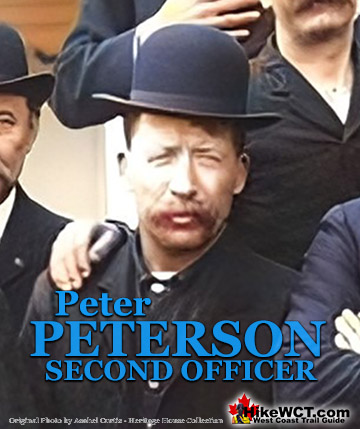
![]() Peter Peterson was the second officer on the Valencia and one of the Topeka Raft survivors. He played a significant role in the events that unfolded during the 37-hour ordeal, which claimed an estimated 136 lives, leaving only 38 survivors. Peterson was an experienced sailor, having run the San Francisco to Seattle route over 100 times, including as second mate on the City of Puebla, the ship the Valencia was temporarily replacing.
Peter Peterson was the second officer on the Valencia and one of the Topeka Raft survivors. He played a significant role in the events that unfolded during the 37-hour ordeal, which claimed an estimated 136 lives, leaving only 38 survivors. Peterson was an experienced sailor, having run the San Francisco to Seattle route over 100 times, including as second mate on the City of Puebla, the ship the Valencia was temporarily replacing.
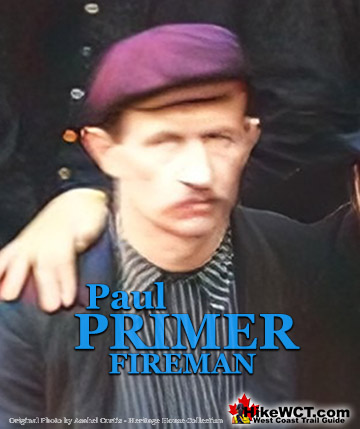
![]() Paul Primer was a fireman on the Valencia who survived on the Topeka Raft. He had worked for the Pacific Coast Steamship Company for the last year. His name appears in newspapers in a variety of ways such as P. Poivner, P. Reimer and even T. Palmer.
Paul Primer was a fireman on the Valencia who survived on the Topeka Raft. He had worked for the Pacific Coast Steamship Company for the last year. His name appears in newspapers in a variety of ways such as P. Poivner, P. Reimer and even T. Palmer.
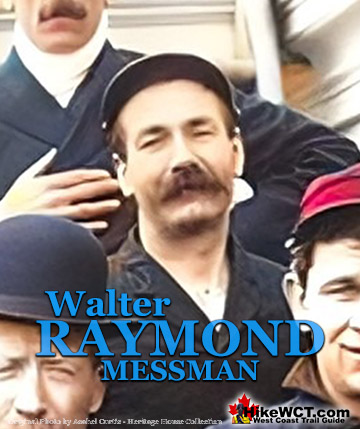
![]() Walter Raymond was a messman aboard the Valencia and one of the 38 survivors of the ship's catastrophic wreck off the coast of Vancouver Island in 1906. Hailing from San Francisco, he was described as tall, with a bushy mustache and a friendly smile. Raymond's survival came amid one of the deadliest maritime disasters in Pacific Northwest history, where the Valencia struck a reef and ultimately claimed the lives of 136 people, including all women and children on board.
Walter Raymond was a messman aboard the Valencia and one of the 38 survivors of the ship's catastrophic wreck off the coast of Vancouver Island in 1906. Hailing from San Francisco, he was described as tall, with a bushy mustache and a friendly smile. Raymond's survival came amid one of the deadliest maritime disasters in Pacific Northwest history, where the Valencia struck a reef and ultimately claimed the lives of 136 people, including all women and children on board.
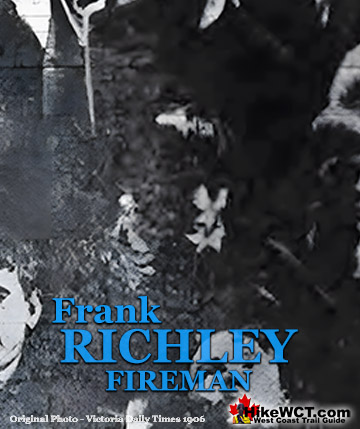
![]() Frank Ritchley was a fireman on the Valencia who survived with the Bunker Party. In an interview after the wreck he recalled, “I got on board No.6 by climbing over the rail before it was lowered. There were nine men and a woman and children.
Frank Ritchley was a fireman on the Valencia who survived with the Bunker Party. In an interview after the wreck he recalled, “I got on board No.6 by climbing over the rail before it was lowered. There were nine men and a woman and children.
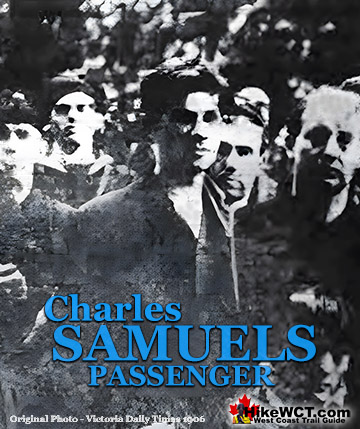
![]() Charles Samuels was a first class passenger on the Valencia who survived with the Bunker Party. During the chaos following the wreck, Samuels escaped on lifeboat No. 3—the fifth boat launched—which carried 15 people but quickly lost an oar, veered into the surf, and capsized, drowning eight occupants.
Charles Samuels was a first class passenger on the Valencia who survived with the Bunker Party. During the chaos following the wreck, Samuels escaped on lifeboat No. 3—the fifth boat launched—which carried 15 people but quickly lost an oar, veered into the surf, and capsized, drowning eight occupants.
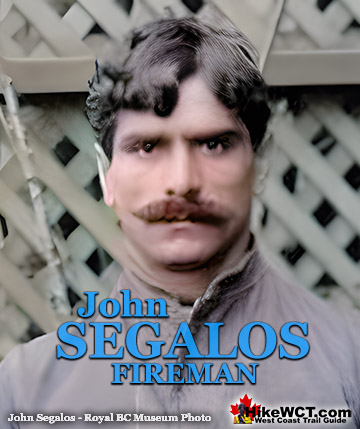
![]() John Segalos was a fireman on the Valencia and one of the survivors of the Valencia disaster. Segalos survived by escaping on the Topeka Raft, one of two life rafts that carried survivors to safety. The Topeka Raft, picked up by the SS City of Topeka on January 24, 1906, carried 19 men, including Segalos, who endured brutal conditions—freezing, battered by waves, and nearly insane from exposure.
John Segalos was a fireman on the Valencia and one of the survivors of the Valencia disaster. Segalos survived by escaping on the Topeka Raft, one of two life rafts that carried survivors to safety. The Topeka Raft, picked up by the SS City of Topeka on January 24, 1906, carried 19 men, including Segalos, who endured brutal conditions—freezing, battered by waves, and nearly insane from exposure.
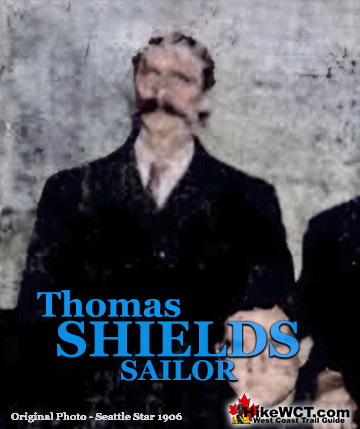
![]() Thomas Shields was a sailor on the Valencia who survived on the last lifeboat (No. 5) to leave the ship. It was launched from the Valencia on the morning of January 23, 1906, around 9am. This lifeboat, under the command of Boatswain Timothy McCarthy and later dubbed the McCarthy Boat, was crewed by Shields and four other sailors, Charles Brown, Tom Lampson, William Gosling, and John Marks.
Thomas Shields was a sailor on the Valencia who survived on the last lifeboat (No. 5) to leave the ship. It was launched from the Valencia on the morning of January 23, 1906, around 9am. This lifeboat, under the command of Boatswain Timothy McCarthy and later dubbed the McCarthy Boat, was crewed by Shields and four other sailors, Charles Brown, Tom Lampson, William Gosling, and John Marks.
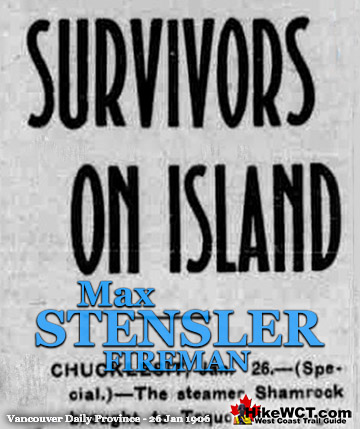
![]() Max Stensler was a fireman on the Valencia who survived on the Turret Raft with Sam Hancock, George Long and Frank Connors. Ten men set off on the raft 34 hours after the Valencia first struck in a desperate attempt to get to ships that arrived, but made no attempts at rescue.
Max Stensler was a fireman on the Valencia who survived on the Turret Raft with Sam Hancock, George Long and Frank Connors. Ten men set off on the raft 34 hours after the Valencia first struck in a desperate attempt to get to ships that arrived, but made no attempts at rescue.
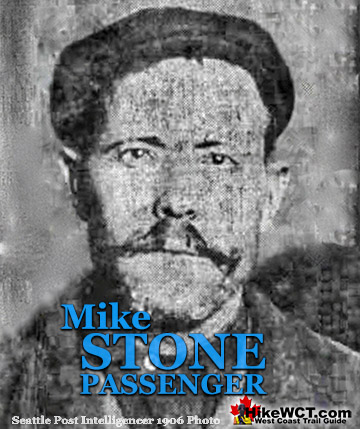
![]() Mike Stone was a first class passenger on the Valencia who survived in the Bunker Party. He left the Valencia in the first hour after the wreck on the No.3 lifeboat, the fifth boat launched and managed to get away from the Valencia for a short distance with fifteen people on board.
Mike Stone was a first class passenger on the Valencia who survived in the Bunker Party. He left the Valencia in the first hour after the wreck on the No.3 lifeboat, the fifth boat launched and managed to get away from the Valencia for a short distance with fifteen people on board.
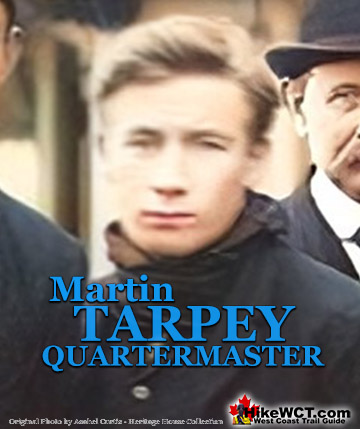
![]() Martin Tarpey was a quartermaster on the Valencia and one of the Topeka Raft survivors. Born around 1882, he began his maritime career in 1903 as a sailor with the Pacific Coast Steamship Company, advancing to quartermaster by 1906.
Martin Tarpey was a quartermaster on the Valencia and one of the Topeka Raft survivors. Born around 1882, he began his maritime career in 1903 as a sailor with the Pacific Coast Steamship Company, advancing to quartermaster by 1906.
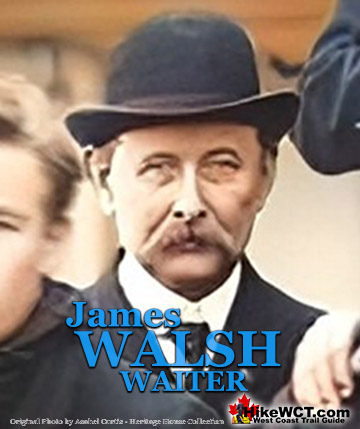
![]() James Walsh was a waiter on the Valencia who survived on the Topeka Raft. He lived in San Francisco with his parents, bother and sisters. He had been working with the Pacific Coast Steamship Company for several years.
James Walsh was a waiter on the Valencia who survived on the Topeka Raft. He lived in San Francisco with his parents, bother and sisters. He had been working with the Pacific Coast Steamship Company for several years.
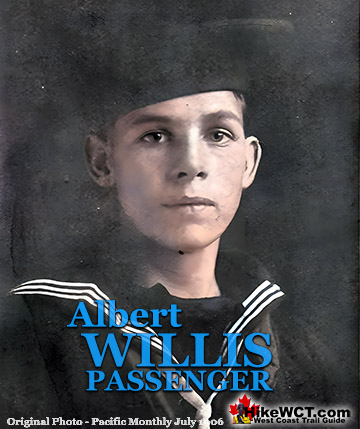
![]() Albert Willis was a 17-year-old United States Navy seaman and second-class passenger aboard the Valencia. He had recently completed his naval training in Pensacola, Florida, and was en route to join his assignment on the USS Philadelphia, which was anchored in Bremerton, Washington.
Albert Willis was a 17-year-old United States Navy seaman and second-class passenger aboard the Valencia. He had recently completed his naval training in Pensacola, Florida, and was en route to join his assignment on the USS Philadelphia, which was anchored in Bremerton, Washington.
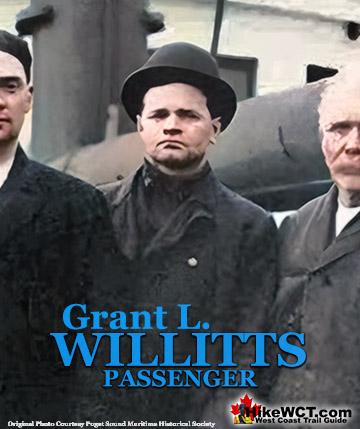
![]() Grant L. Willitts, sometimes spelled Willits or Willets, was a second-class passenger aboard the ill-fated SS Valencia, who survived on the second raft (Topeka Raft), the last raft to depart the Valencia. A skilled lather (construction framer) from Riverside, California, approximately 50 miles southeast of Los Angeles, Willitts was traveling to Seattle in search of work, with plans to settle there with his wife if successful.
Grant L. Willitts, sometimes spelled Willits or Willets, was a second-class passenger aboard the ill-fated SS Valencia, who survived on the second raft (Topeka Raft), the last raft to depart the Valencia. A skilled lather (construction framer) from Riverside, California, approximately 50 miles southeast of Los Angeles, Willitts was traveling to Seattle in search of work, with plans to settle there with his wife if successful.
West Coast Trail Guide
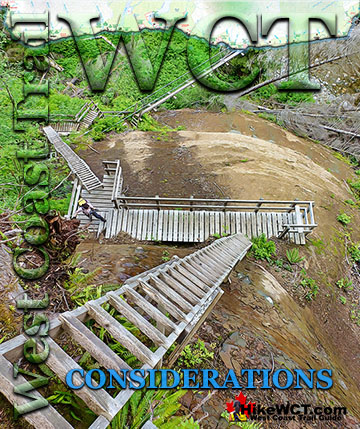
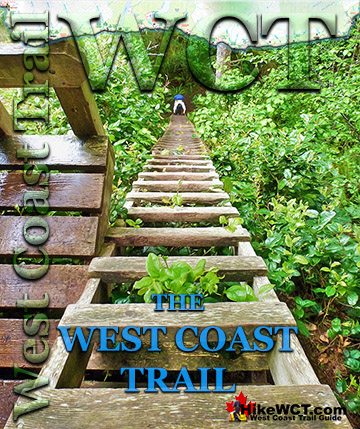
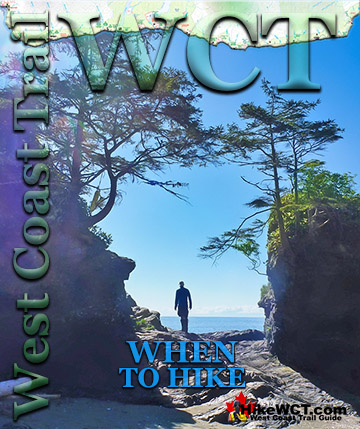
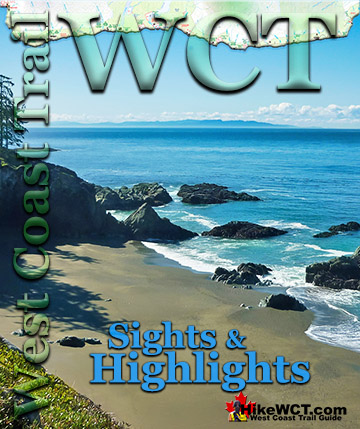
West Coast Trail Shipwrecks
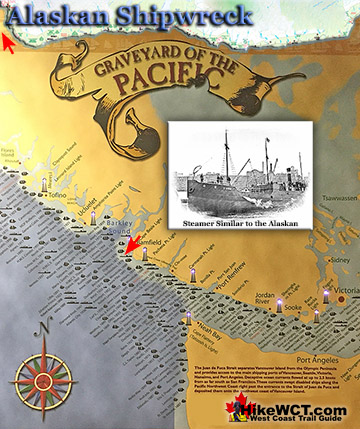
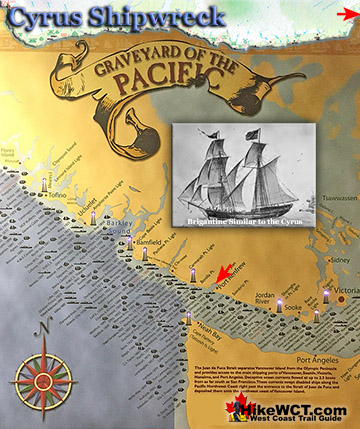
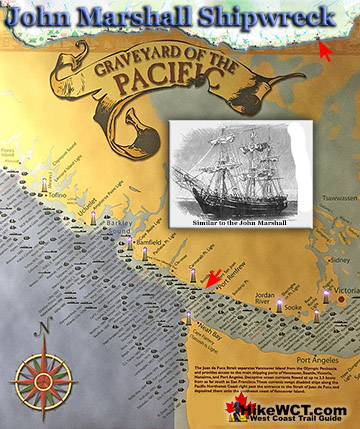
The Valencia Disaster
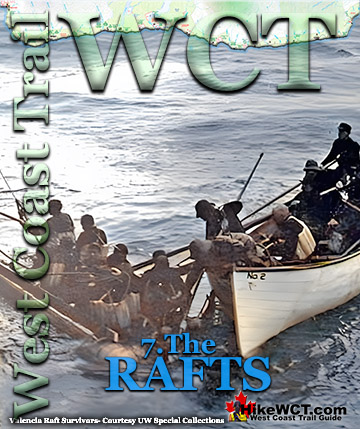
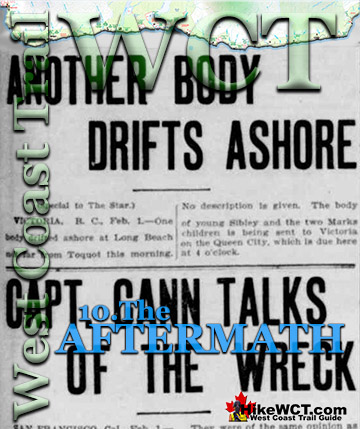
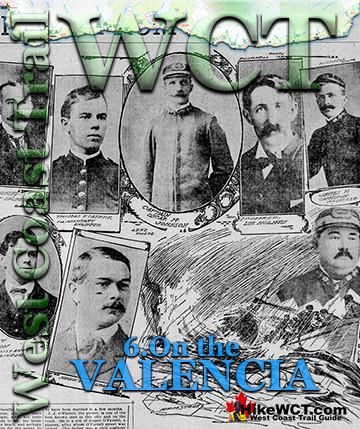
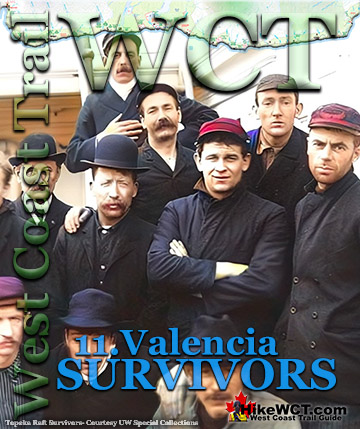
West Coast Trail Campsites
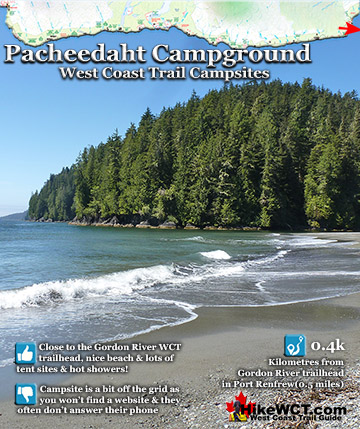
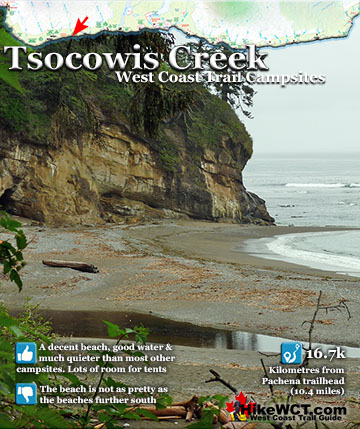
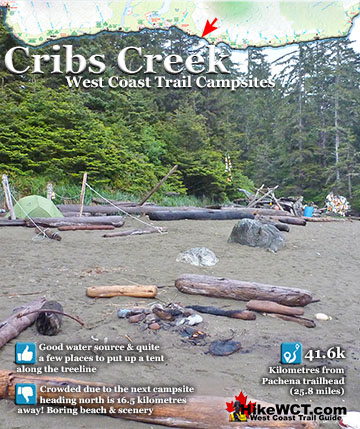
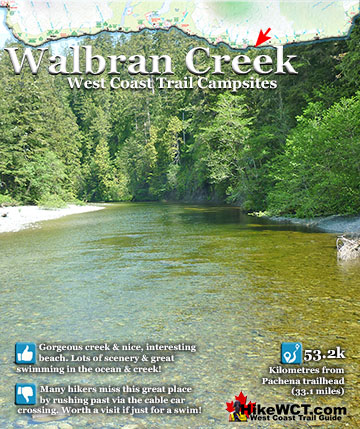
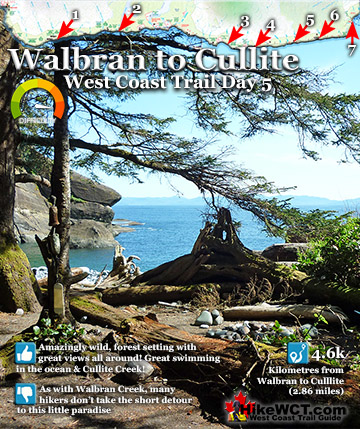
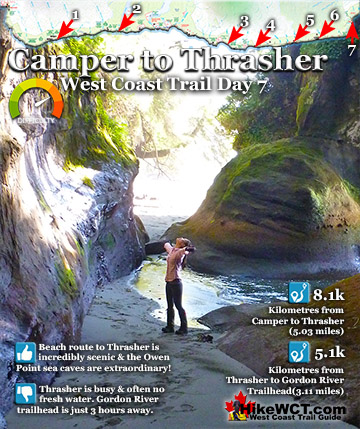
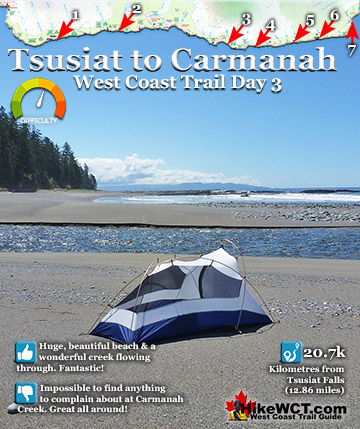
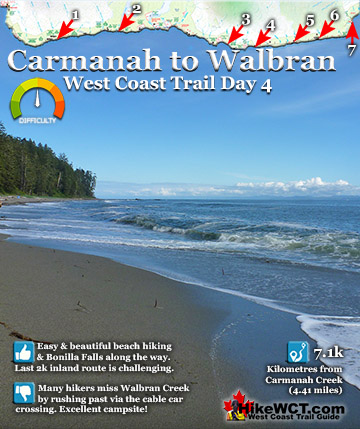
Explore BC Hiking Destinations!
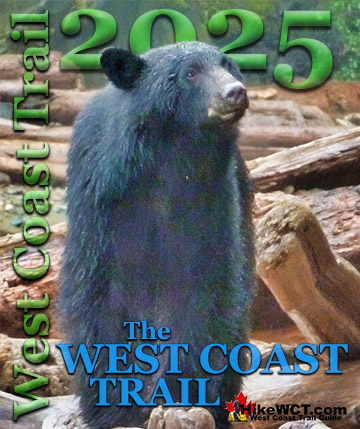
The West Coast Trail

Victoria Hiking Trails

Clayoquot Hiking Trails

Whistler Hiking Trails

Squamish Hiking Trails


